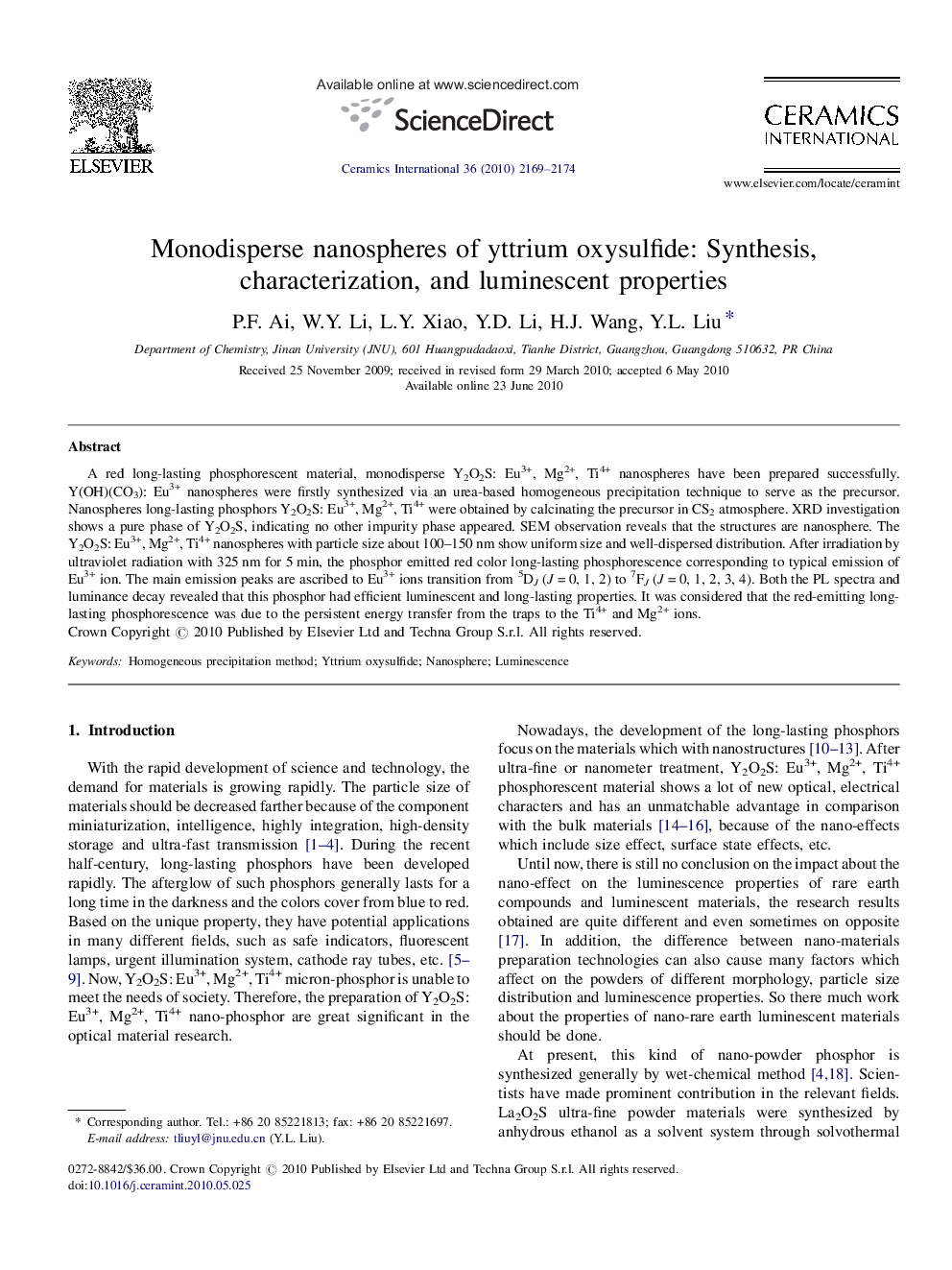| Article ID | Journal | Published Year | Pages | File Type |
|---|---|---|---|---|
| 1464972 | Ceramics International | 2010 | 6 Pages |
A red long-lasting phosphorescent material, monodisperse Y2O2S: Eu3+, Mg2+, Ti4+ nanospheres have been prepared successfully. Y(OH)(CO3): Eu3+ nanospheres were firstly synthesized via an urea-based homogeneous precipitation technique to serve as the precursor. Nanospheres long-lasting phosphors Y2O2S: Eu3+, Mg2+, Ti4+ were obtained by calcinating the precursor in CS2 atmosphere. XRD investigation shows a pure phase of Y2O2S, indicating no other impurity phase appeared. SEM observation reveals that the structures are nanosphere. The Y2O2S: Eu3+, Mg2+, Ti4+ nanospheres with particle size about 100–150 nm show uniform size and well-dispersed distribution. After irradiation by ultraviolet radiation with 325 nm for 5 min, the phosphor emitted red color long-lasting phosphorescence corresponding to typical emission of Eu3+ ion. The main emission peaks are ascribed to Eu3+ ions transition from 5DJ (J = 0, 1, 2) to 7FJ (J = 0, 1, 2, 3, 4). Both the PL spectra and luminance decay revealed that this phosphor had efficient luminescent and long-lasting properties. It was considered that the red-emitting long-lasting phosphorescence was due to the persistent energy transfer from the traps to the Ti4+ and Mg2+ ions.
